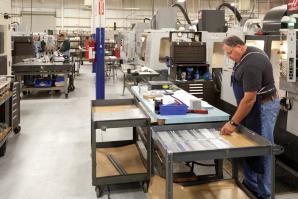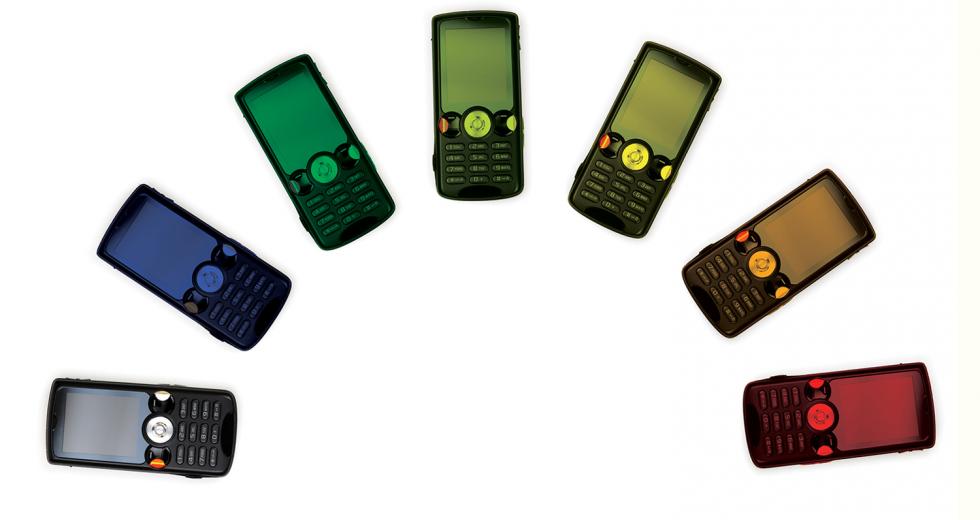Jim Noonan collects frequent flier miles from Washington state to Louisiana and everywhere in between. The senior director for corporate alliances at ev3 Inc., a medical device company headquartered in Minnesota, almost lives in his black GMC truck when he is home in Granite Bay.
Noonan’s lifeline is his mobile phone. “Reliability is important to me,” he says. “I have to be able to email on the fly, and I can’t be stuck behind a desk.”
He uses AT&T because of the coverage, browser speed and the ability to talk, download data and use the wireless card in his laptop. “It is the best of all worlds,” Noonan says.
In the competitive sphere of telecommunications — mobile, wireless, broadband, cable and satellite — companies are fighting fiercely to win the hearts, minds and contracts of people like Noonan. According to the Telecommunications Industry Association, in 2008, telecom was a $3.85 trillion industry worldwide, including $1.1 trillion in the U.S. The Insight Research Corp. estimates telecommunications revenue in the U.S. could grow to $2.7 trillion by 2013, and Sacramento is one of the busiest battlefields in the ensuing branding war.
“Because this is the home of state government, almost all of the carriers have a very strong presence in the area,” says Barbara O’Connor, communications professor at Sacramento State and director of the Institute for the Study of Politics and Media. “They want to serve the people who regulate them.”
While access to even one cable or broadband network is not always available in rural areas, “Sacramento ended up being one of the most built-over areas,” says Margaret Felts, president of Sacramento-based California Communications Association.
AT&T, Surewest and Comcast compete on the ground under the looming shadow of a possible entry from Google Inc. into the fiber-optics market. Meanwhile, the airwaves have become a free-for-all that includes Internet-based solutions such as Vonage and mobile broadband providers Sprint, Verizon and AT&T.
Companies use a combination of marketing, advertising and pricing campaigns, constant investment in new technology and ever-changing partnerships to jockey for position in this information horse race. Telecommunications companies invested $21 billion in California last year, according to O’Connor.
“The entire industry is intensely competitive,” says Peter Shankel, AT&T director of marketing for Northern California and Reno. “But California is the most hotly contested state in the country.”
The Capital Region consumer not only has more choices than those in other parts of the country, they are more sophisticated, says Peter Drozdoff, SureWest’s vice president of marketing. “They are very technology savvy,” he says. “The industry and technology is constantly evolving to offer new alternatives.”
“The entire industry is intensely competitive, but California is the most hotly contested state in the country.”
Peter Shankel, director of marketing for Northern California and Reno, AT&T
Recent years have brought competition that has driven prices down for telecom services. “We had to introduce a $69.99 unlimited [mobile voice feature for phones] plan at the same time as Verizon to compete,” Shankel says. Unlimited texting, which is quickly becoming more popular than voice, is another $20.
At home, bundled services have become the norm since deregulation in 2002 made it possible for companies to offer local, long distance and anything else they could pack in their delivery vans. In February, Comcast rolled out its Xfinity brand — a television, on-demand content, Internet and voice service — in the Bay Area and will offer the same bundled deal in Sacramento in July. “This new product brings all our best services under one umbrella,” says Elaine Barden, Comcast vice president of marketing. While the services aren’t necessarily new, they are improved, such as more high-definition television channels and increased Internet speed.
SureWest is launching a new bundled Internet, voice and digital TV service with a whole-home DVR and video on demand. Similarly, AT&T offers U-verse, its moniker for an inclusive package of digital television, high-speed Internet and home phone service. “It’s all about connecting people to their lives,” Shankel says.
How does a company differentiate itself in a crowded field? A never-ending technology race keeps providers introducing new items almost monthly in an attempt to stay ahead of the competition.
“We have a 130-year history as a technology leader,” Shankel says. The exclusive iPhone service provider advertises its 3G network as the fastest and most reliable.
That partnership with Apple fuels a powerful marketing campaign. “We rely heavily on our partners to deliver value neither one of us could create alone,” Shankel says.
Similarly, SureWest’s new digital TV service is branded as a partnership with Microsoft. “Partnering with someone like Microsoft brings credibility to the product,” says Drozdoff.
To butcher an old marketing saying: “Investing in fiber networks and high-tech gadgets without advertising the benefits is like making a 911 call with the power button turned off.” Telecommunications companies spend millions of dollars each month on television and radio ads promoting their price and technology message in creative and often provocative ways. Remember the AT&T Olympic ads with Gretchen Bleiler snowboarding in space to a Lou Reed song? How about the Comcast “Shaq’s got your back” ads?
When rebranding or launching a new brand such as Xfinity, the investment in awareness can be immense. Drozdoff says he is familiar with that. In 2002, the local company rebranded itself from Roseville Telephone to SureWest to convey expanding geographic and technology offerings. “Because we had a limited advertising budget, it took three or four years to get the message across,” he says.
“Because this is the home of state government, almost all of the carriers have a very strong presence in the area.”
Barbara O’Connor, communications professor, Sacramento State, and director, Institute for the Study of Politics and Media
Drozdoff says small companies like SureWest have to find alternative ways to communicate their brands. “It’s one thing to shout with millions of dollars of marketing, but it is more powerful to deliver on the promise of great service one customer at a time,” Drozdoff says. “Every one of our employees is our advertisement.”
Barden says Comcast’s uniforms and vehicles will soon carry the Xfinity name and marketers will go door-to-door to educate people about the new brand. “The first and biggest investment is in the network,” she says. “We have to make sure that is in place.”
One size doesn’t fit all when it comes to telecom advertising. AT&T’s Hispanic Intensive Traffic stores in the Sacramento area target Spanish-speaking early adopters for technology. In the Bay Area, similar stores focus on the Asian (Chinese, Japanese and Hmong) demographic.
Comcast markets in 11 languages, including a growing Russian community, according to Barden. The company reaches out to niche audiences with grassroots event marketing at festivals from Yuba City to Elk Grove.
Another key audience: small businesses. “When times are tough, small businesses start up, so this is a growing customer base right now,” Shankel says. AT&T uses a dedicated small business direct-sales team, direct mail and targeted product suites to woo this demographic.
SureWest caters to the business audience with personalized services including domain name registrations, shared Web hosting and online back up in addition to traditional voice, Internet and digital television packages. “These are carrier-grade services designed for enterprise and medium,” says Drozdoff.
Corporate giving is another way companies reach current and potential customers. “Philanthropy is part of our DNA,” Shankel says. The company has long sponsored the Northern California Special Olympics, which will hold its event at UC Davis.
The company’s 54,000 employees donate 410,000 volunteer hours a year, and the company is the major sponsor of Aspire, an organization dedicated to keeping kids in school.
“Philanthropy is some of the most important work I do every year,” Shankel says.
Comcast, which considers itself a family-owned business because the founder and his son own controlling shares, holds an annual Comcast Cares Day. Last year, 60,000 volunteers (including 750 employees in the Sacramento area) worked on 600 projects around the country.
Recommended For You

The Auburn Advantage
How one city turned lifestyle into business leads
Downtown Auburn has a distinct, modern-day Mayberry feel, from the stone-paved sidewalks to the rustic brick bus stop. But five miles away,

Social Network
How crowdfunding connects strangers — and your business – to money
“Small Market, Big Heart” tells the story of the Sacramento Kings and their fans’ fight to hold onto the team. But the 80-minute documentary — packed with NBA archive footage and interviews with Kings’ executives, local politicians and sports entertainment personalities — isn’t from the NBA offices or an established production company.



